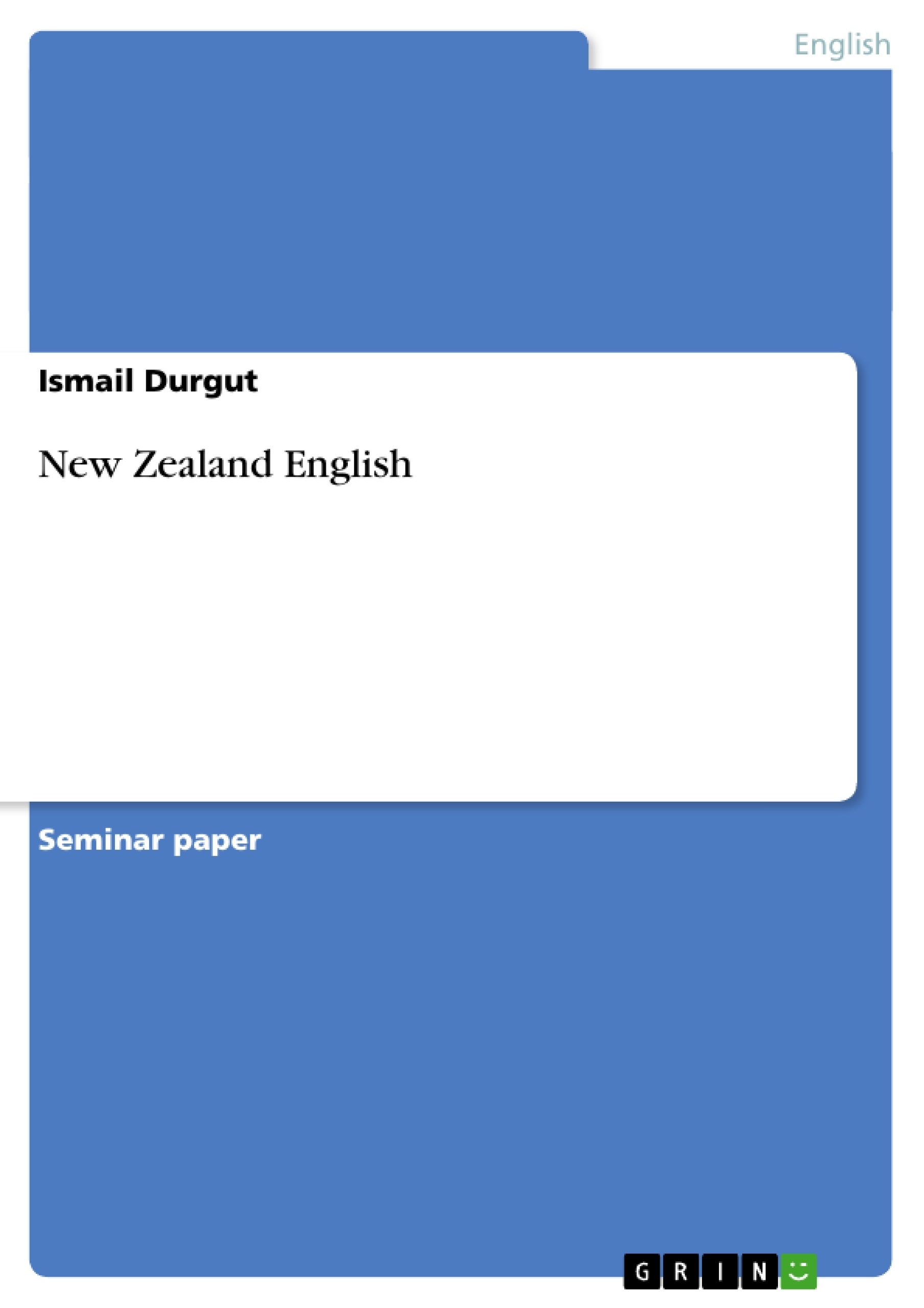New Zealand English is one of the most closely studied national varieties of English outside the USA and UK, and a source of significance for the dialect differentiation and historical evolution of English. Most of the work has been done in the relatively short period of about 15 years compared with the longer time frame of studies in British and American English. One reason for this is that New Zealand English has, from its beginning, benefited from significant co-operative and collaborative activity among New Zealand linguists (see Kuiper, 2003). This paper gives an overview of how this certain variety of the language emerged and changed until today. It also deals with its specific characteristics in comparison with other varieties, especially varieties of the Southern Hemisphere. New Zealand was first discovered by Polynesian explorers and settled by AD 1150. It was
rediscovered by Abel Tasman, a Dutch, in 1642, and was given its name by Dutch geographers
by the end of that century. Its language contact situation with English took place when Captain
James Cook, who claimed it for the British Crown, visited New Zealand with H.M.S Endeavor in
1769 (see Macalister, 2006; Bauer, 1994). From about 1792 onwards European traders, whalers
and sealers operated from the coasts of New Zealand. English was probably the lingua franca of
this region.
Since 1840, when the Treaty of Waitangi was signed between representatives of the British
government and a number of Maori chiefs, English attached its importance. More and more
Pakeha, as the Maori called settlers of European origin, came in three periods of mass migration
between 1840 and 1880. Most settlers were upper working class and lower middle class and
largely British (see Bauer, 1994). There were several motives why they left their home-countries
to start a new life so far away. An overriding belief was that travelling to this distant country
would enable people to better themselves and provide better prospects for their children, without
abandoning their British roots. Their aim was the creation of a new Britain in the South Pacific in
the context of British law, religion, education, social values and practices (see Gordon and
Sudbury, 2002). Another reason was the hope of becoming wealthy. Miners came, mainly from
Australia, enforced by the hope to find gold since it had been discovered in 1861 in Otago, South
Island.
Table of Contents
- Introduction
- The First Settlers
- The Development of New Zealand English:
- Influences of English Dialects
- Influences of Other Languages
- Maori Influence
- Features of New Zealand English:
- Vocabulary
- Pronunciation
- Grammatical features
- Similarities with other Varieties
- Conclusion
Objectives and Key Themes
This paper provides a comprehensive overview of the emergence and evolution of New Zealand English, a national variety of English outside the USA and UK, and its distinctive characteristics in comparison with other varieties, particularly those from the Southern Hemisphere.
- Historical development of New Zealand English
- Influences of various English dialects and other languages
- The impact of Maori language and culture on New Zealand English
- Distinctive features of New Zealand English in terms of vocabulary, pronunciation, and grammar
- Similarities and differences with other varieties of English
Chapter Summaries
- Introduction: Introduces New Zealand English as a significant and well-studied national variety of English, highlighting the collaborative efforts of New Zealand linguists in its research. The chapter outlines the paper's objectives, focusing on the emergence and evolution of New Zealand English and its unique characteristics.
- The First Settlers: Delves into the historical context of New Zealand's settlement, starting with the arrival of Polynesian explorers and the subsequent European exploration and colonization. The chapter emphasizes the role of Captain James Cook's visit in 1769 and the subsequent influx of European settlers, primarily from England, Scotland, Ireland, and Australia. It explores the motivations for migration and the diverse backgrounds of the settlers, particularly their social classes and goals for establishing a new Britain in the South Pacific.
- The Development of New Zealand English: Examines the key influences that shaped New Zealand English, including the diverse dialects and accents brought by settlers from various Anglophone regions. The chapter details the proportions of settlers from different areas, highlighting the dominance of settlers from England, Scotland, and Ireland. It also explores the influence of Australian English and the growing impact of American English in recent decades.
- Influences of Other Languages: Explores the impact of languages other than English on the development of New Zealand English. The chapter discusses the influence of Maori, the pre-existing language of New Zealand, and other European languages spoken by some settlers, such as Welsh, Irish Gaelic, and Scottish Gaelic. It also mentions the temporary presence of Chinese workers in gold mining areas.
- Maori Influence: Focuses on the significant influence of Maori on New Zealand English, particularly in terms of vocabulary. The chapter highlights the borrowing of Maori words, primarily to describe flora and fauna of New Zealand. It discusses the changing perception of Maori language and culture, from an anthropological interest to a recognition of its contemporary relevance.
- Features of New Zealand English: Explores the distinctive features of New Zealand English, starting with vocabulary. The chapter highlights the presence of Maori words and the increasing use of such words in the media and cultural institutions. It also examines the influence of Americanisms and Australianisms on New Zealand English vocabulary.
- Pronunciation: Discusses the pronunciation characteristics of New Zealand English, noting its similarities to Received Pronunciation (RP) in vowel system and consonant inventory. The chapter outlines key differences in phoneme realization, particularly regarding /hw/ and the assimilation of alveolar obstruents and /j/.
Keywords
New Zealand English, English dialects, Maori influence, vocabulary, pronunciation, Southern Hemisphere varieties, historical evolution, language contact, social and cultural context.
- Quote paper
- Ismail Durgut (Author), 2007, New Zealand English, Munich, GRIN Verlag, https://www.grin.com/document/90949




